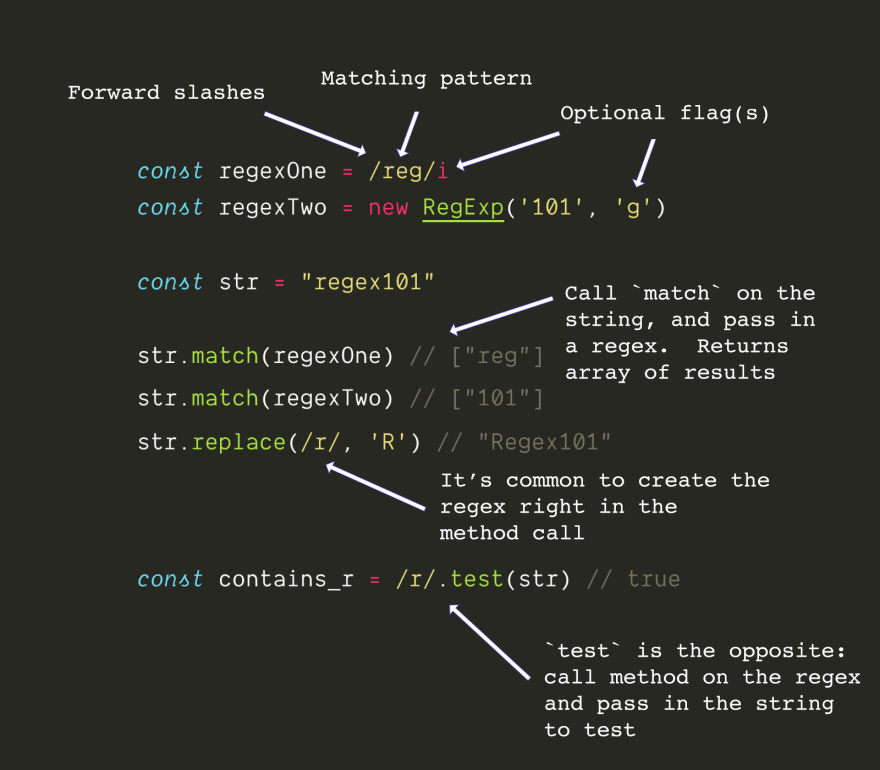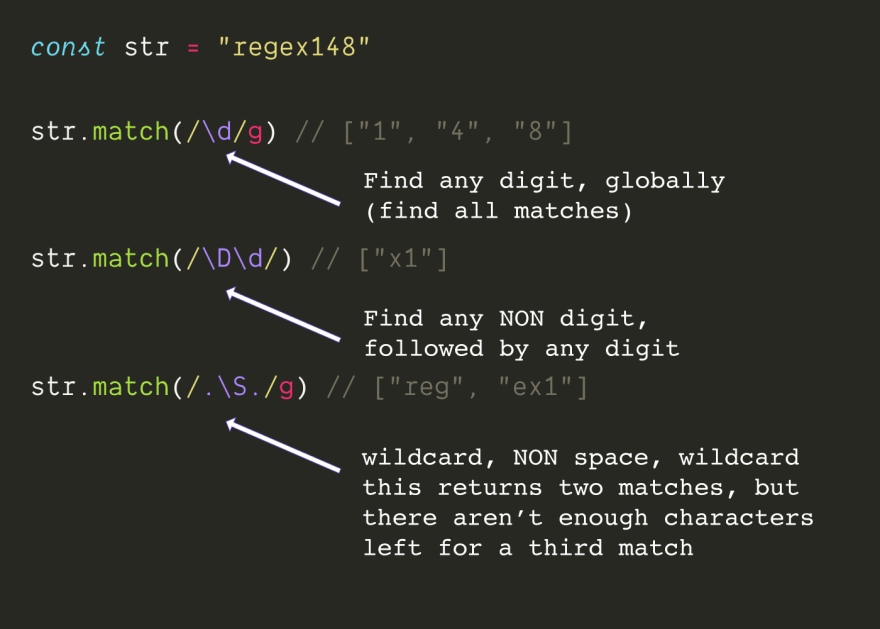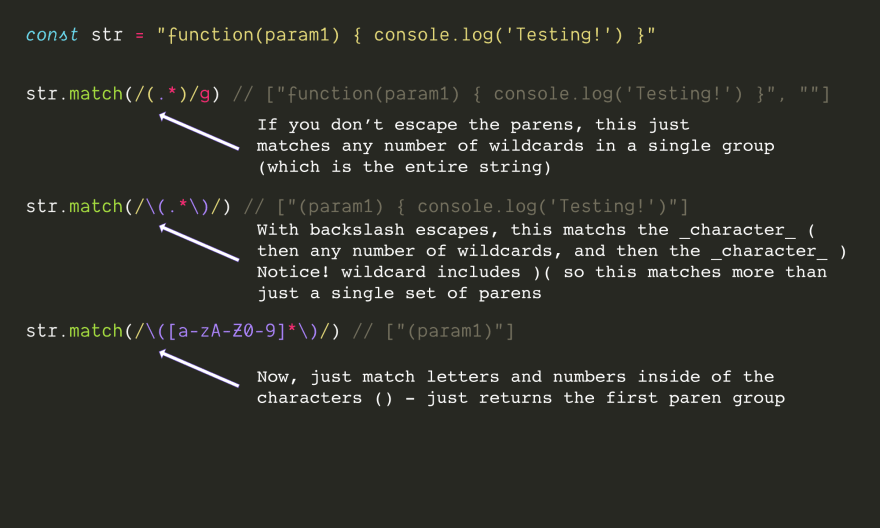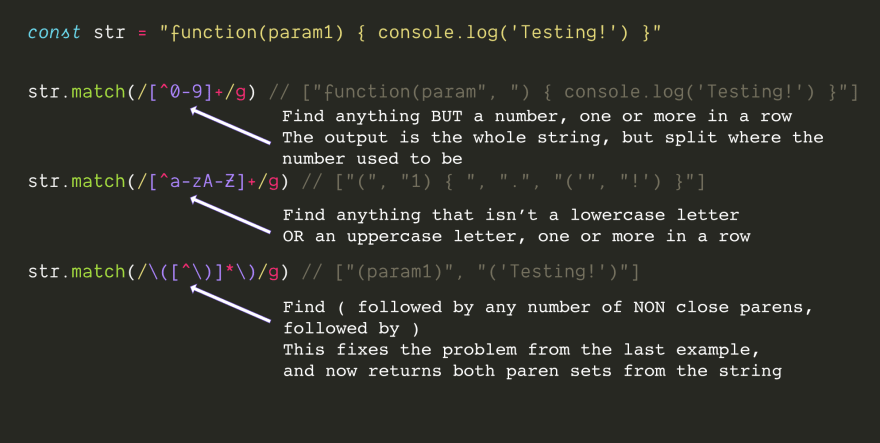An Interest In:
Web News this Week
- April 20, 2024
- April 19, 2024
- April 18, 2024
- April 17, 2024
- April 16, 2024
- April 15, 2024
- April 14, 2024
Intro to Regex for Web Developers
This was originally posted as a twitter thread: https://twitter.com/chrisachard/status/1181583499112976384
1.
Regular expressions find parts of a string that match a pattern
In JavaScript they're created in between forward slashes //, or with new RegExp()
and then used in methods like match, test, or replace
You can define the regex beforehand, or directly when calling the method
2.
Match individual characters one at a time,
or put multiple characters in square brackets [] to capture any that match
Capture a range of characters with a hyphen -
3.
Add optional flags to the end of a regex to modify how the matcher works.
In JavaScript, these flags are:
i = case insensitive
m = multi line matching
g = global match (find all, instead of find one)
4.
Using a caret ^ at the start means "start of string"
Using a dollar sign $ at the end means "end of string"
Start putting groups of matches together to match longer strings
5.
Use wildcards and special escaped characters to match larger classes of characters
. = any character except line break
\d = digit
\D = NOT a digit
\s = white space
\S = any NON white space
\n new line
6.
Match only certain counts of matched characters or groups with quantifiers
- = zero or more
- = one more more? = 0 or 1{3} = exactly 3 times{2, 4} = two, three, or four times{2,} = two or more times
7.
Use parens () to capture in a group
match will return the full match plus the groups, unless you use the g flag
Use the pipe operator | inside of parens () to specify what that group matches
| = or
8.
To match special characters, escape them with a backslash \
Special characters in JS regex are: ^ $ \ . * + ? ( ) [ ] { } |
So to match an asterisks, you'd use:
*
Instead of just *
9.
To match anything BUT a certain character, use a caret ^ inside of square brackets
This means ^ has two meanings, which can be confusing.
It means both "start of string" when it is at the front of a regex, and "not this character" when used inside of square brackets.
10.
Regexs can be used to find and match all sort of things, from urls to filenames
HOWEVER! be careful if you try to use regexs for really complex tasks, such as parsing emails (which get really confusing, really fast), or HTML (which is not a regular language, and so can't be fully parsed by a regular expression)
There is (of course) much more to regex like lazy vs greedy, lookahead, and capturing
but most of what web developers want to do with regular expressions can use just these base building blocks.
I'm already writing a follow up post with a bunch of real world regex use cases
Like this post?
Find more on twitter: @chrisachard
Or join the newsletter https://chrisachard.com/newsletter/
Thanks for reading!
Original Link: https://dev.to/chrisachard/intro-to-regex-for-web-developers-2fj4
Dev To
 An online community for sharing and discovering great ideas, having debates, and making friends
An online community for sharing and discovering great ideas, having debates, and making friendsMore About this Source Visit Dev To










